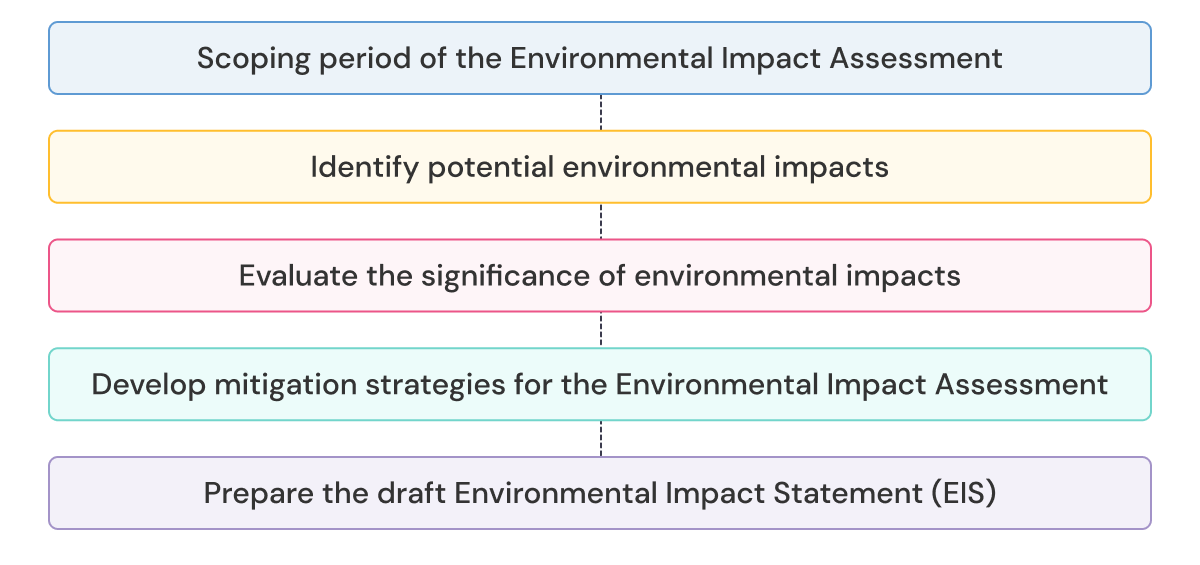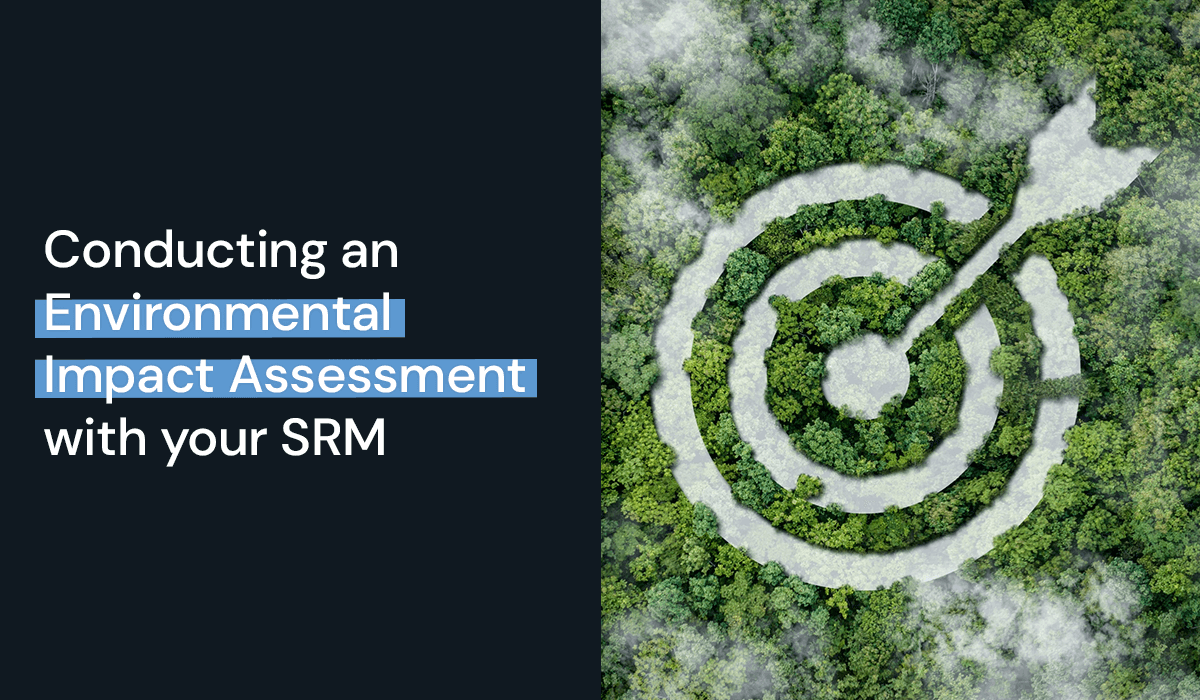When preparing an Environmental Impact Assessment (EIA) there is commonly a requirement, and expectation, that a comprehensive community consultation will be undertaken. So, understanding and gathering the unique insights, concerns, and suggestions from affected stakeholders is critical. Conducting an EIA with your Stakeholder Relationship Management (SRM) platform will streamline and enhance this process.
Are you working on a project that could greatly influence the environment? Then it’s usually a requirement to undergo an Environmental Impact Assessment (EIA) to identify and determine any environmental implications and their significance.
Stakeholder management is an important component in preparing for an EIA since it involves identifying and communicating with key stakeholders who may be impacted during the course of a particular project. But how do you know which stakeholders to interact with? A Stakeholder Relationship Management (SRM) platform can help streamline your EIA process by providing a centralised source of truth to assess and analyse your stakeholder data.

So, what’s an Environmental Impact Assessment?
An Environmental Impact Assessment (EIA) is used to help decision-makers determine the potential environmental impacts of a proposed project or development.
Typically, Environmental Impact Assessments are required by law in order for discovering and analysing possible concerns regarding the environment while promoting social and economic development.
For example, if a construction company plans to build a new commercial building, and this will have a significant impact on the environment, then they may need to undergo an EIA process. This process will identify and assess the potential environmental impacts, both positive and negative, of the project. By doing so, the construction company can demonstrate their commitment to sustainable construction practices, by protecting the environment and complying with environmental regulations. Sounds simple, right?
It is highly recommended that you review your country’s environmental planning and assessment act, to ensure that you comply with rules and regulations. In Australia for example, the Environment Protection and Biodiversity Conservation Act 1999 (EPBC Act) requires an EIA for certain types of projects that may have significant environmental impacts. Similarly, the EIA process is mandated at the federal level by the National Environmental Policy Act of 1969 (NEPA) to assess the potential impact of actions “significantly affecting the quality of the human environment.”
So, what could you consider an environmental impact? Here are a few examples:
- Air and Climate: Air quality, climate change contributions, or health implications
- Human Environment: Air pollution, noise pollution, soil contamination, green spaces access, hazardous waste, or water scarcity
- Land: Mining, deforestation, urbanisation, or soil degradation
- Water: Water pollution, habitat destruction or displacement
What’s the difference between an EIA vs EIS?
An Environmental Impact Statement (EIS) is a detailed document that is generated to report the findings of an Environmental Impact Assessment (EIA).
If the EIS is approved, the conditions from the EIS report must be abided by so the project can continue. The EIS typically becomes available for public review and feedback, which may be required by national or international law.

5 Steps to Prepare an Environmental Impact Assessment with Your SRM
So, you’re working on a project that requires an EIA, but you’re not sure where to begin? We have curated a list of 5 steps that will help you prepare for an Environmental Impact Assessment using your SRM:
- Scoping period of the Environmental Impact Assessment
- Identify potential environmental impacts
- Evaluate the significance of environmental impacts
- Develop mitigation strategies for the Environmental Impact Assessment
- Prepare the Environmental Impact Assessment report
1. Scoping period of the Environmental Impact Assessment
The first step when preparing for an Environmental Impact Assessment is the scoping period. This is where you begin to identify which stakeholders you need to communicate with on a particular project, so you can create a plan that assesses critical concerns. This can include identifying relevant regulatory requirements and guidelines, as well as an initial scope of environmental impacts with key stakeholders.
Generally, public consultation will commence in the scoping period. So, having a centralised platform to help manage stakeholder interactions and feedback is essential.
An SRM will provide the most up-to-date source of stakeholder data for your organisation. Not only will it provide a historical timeline of every single interaction with your stakeholders, but it will ensure you are identifying your affected stakeholders early on.
By using your SRM to easily identify who the most affected stakeholders are, either by their proximity, vulnerability, or influence, you are already setting up a successful foundation for your EIA. This will also confirm the key concerns of your stakeholders and ensure you are not carrying out assessments of impacts that are not of a concern
2. Identify potential environmental impacts
Once you have discovered your key stakeholders, it’s now time to get into your Environmental Impact Assessment, by identifying the potential impacts and probable causes to the environment.
An SRM can assist you in collecting valuable feedback from your stakeholders regarding environmental impacts. You will be able to identify common themes, issues, and sentiment among your stakeholders by customising your SRM to capture the exact information you require.
By capturing your stakeholder interactions throughout the consultation period in an SRM, you can quickly identify and report on potential impacts as they arise. For example, Consultation Manager has a built-in ‘Event Statistics’ report which can showcase a breakdown of all issues and impacts that have been voiced by your stakeholders.
Ensuring that all stakeholders are consulted and engaged in the impact identification process, can lead to more sustainable outcomes as feedback is properly collected, analysed, and acted upon. Plus, an SRM will provide a clear breakdown on any key stakeholders or stakeholder groups that have been missed in the consultation period.

3. Evaluate the significance of environmental impacts
After you have identified the potential environmental impacts, it’s now time to evaluate their significance. This allows decision-makers to determine the appropriate level of assessment of these impacts and to prioritise them from most important to least important. This will confirm that resources are being used appropriately and efficiently with relevant impacts being considered and addressed.
An SRM can help determine and manage the significance of these impacts of a project, by recording and analysing your interactions. Because these interactions will be linked to stakeholders throughout the consultation period, you will be able to identify any shifts in feedback with an ‘Issues Over Time’ report.
4. Develop mitigation strategies for the Environmental Impact Assessment
The mitigation phase requires you to create a plan that will avoid, mitigate, or remedy adverse impacts. Developing mitigation strategies can help project teams demonstrate to regulatory agencies and other stakeholders that they have taken the appropriate steps in committing to protect the environment and other valuable resources.
An SRM can help you develop and implement a plan that outlines the specific mitigation strategies that will be employed to address potential impacts. By identifying potential effects and adopting mitigation processes, you are preventing negative impacts on human health and the environment while meeting regulatory requirements and stakeholder expectations.
So, how does an SRM assist in mitigating adverse impacts?
Well, with appropriate stakeholder consultation, you can incorporate this feedback into your mitigation measures to reduce adverse risks and increase local social and economic benefits.
A combination of communication tools, project reports, and actions will ensure your project team remains engaged with these key stakeholders throughout the consultation period. This is essential as it reaffirms to your stakeholders throughout the Environmental Impact Assessment process that their feedback is fully considered and integrated into the decision-making process.
Closing the consultation loop with an SRM can help build trust and confidence between project proponents, regulators, and affected communities, and can lead to more collaborative outcomes.

5. Prepare the draft Environmental Impact Statement (EIS)
Finally, once you have complied all of your findings from the Environmental Impact Assessment, you can then generate the draft EIS. This report should be detailed, clear, and concise and should be disclosed to all key stakeholders and affected community members. It should include key findings, conclusions, and recommendations for future action.
An SRM can enhance this process by producing data visualisations and reports to provide a visual understanding of stakeholder issues, concerns, and suggestions as they relate to the project.
And, as all of your historical stakeholder data is connected to the project, you have a secure space to reference any key interactions throughout your entire project lifecycle. As a result, you can make more informed decisions about how to minimise the identified environmental impacts and remain proactive in communicating to your stakeholders.
Some organisations, such as City of Newcastle, provide ongoing project information to keep their stakeholders informed of when an EIS will be released. Timelines, project updates, and transparent communications all contribute to building trusting relationships with stakeholders.
Monitoring and Managing Environmental Impacts
Once your project has been approved, a renewed focus should be on monitoring and managing the identified environmental impacts. This includes implementing any mitigation measures that were identified in your EIA, monitoring the project’s environmental performance, and reporting on any unexpected impacts that may arise.
This should be easily facilitated with ongoing stakeholder engagement and proactively identifying risks or spikes in issues.
Communicating actively with your affected stakeholders on any updates or alerts will contribute to building better, ongoing relationships. An SRM that can support quick communications to the relevant stakeholder groups will help immensely. Especially if there’s an unexpected issue or emergency that needs a fast and timely response.
Implementing an SRM will allow you and your team to remain confident in your stakeholder data throughout the EIA process. If you’re wanting to understand more about how this can be implemented with Consultation Manager, please reach to our team today.

